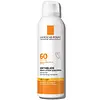What's inside
What's inside
 Key Ingredients
Key Ingredients

 Benefits
Benefits

 Concerns
Concerns

 Ingredients Side-by-side
Ingredients Side-by-side

Ethylhexyl Methoxycinnamate
UV AbsorberDiethylamino Hydroxybenzoyl Hexyl Benzoate
UV FilterWater
Skin ConditioningButylene Glycol
HumectantPolymethylsilsesquioxane
Dicaprylyl Carbonate
EmollientStearalkonium Hectorite
Gel FormingPropylene Carbonate
SolventSclerotium Gum
Emulsion StabilisingSodium Polyacrylate
AbsorbentAloe Barbadensis Leaf Juice Powder
Skin ConditioningGlycerin
HumectantPanthenol
Skin ConditioningEscin
TonicRuscus Aculeatus Root Extract
AstringentAmmonium Glycyrrhizate
MaskingCentella Asiatica Extract
CleansingHydrolyzed Yeast Protein
Skin ConditioningCalendula Officinalis Flower Extract
MaskingParfum
MaskingPhenoxyethanol
PreservativeChlorphenesin
AntimicrobialEthylhexyl Methoxycinnamate, Diethylamino Hydroxybenzoyl Hexyl Benzoate, Water, Butylene Glycol, Polymethylsilsesquioxane, Dicaprylyl Carbonate, Stearalkonium Hectorite, Propylene Carbonate, Sclerotium Gum, Sodium Polyacrylate, Aloe Barbadensis Leaf Juice Powder, Glycerin, Panthenol, Escin, Ruscus Aculeatus Root Extract, Ammonium Glycyrrhizate, Centella Asiatica Extract, Hydrolyzed Yeast Protein, Calendula Officinalis Flower Extract, Parfum, Phenoxyethanol, Chlorphenesin
Butyl Methoxydibenzoylmethane 2.68%
UV AbsorberHomosalate 9.6%
Skin ConditioningEthylhexyl Salicylate 2.88%
UV AbsorberOctocrylene 5.38%
UV AbsorberBenzophenone-3 3.46%
UV AbsorberWater
Skin ConditioningDimethicone
EmollientIsopropyl Lauroyl Sarcosinate
Skin ConditioningGlycerin
HumectantStyrene/Acrylates Copolymer
Isotridecyl Isononanoate
EmollientPolyurethane-35
Caprylyl Methicone
Skin ConditioningOctyldodecanol
EmollientPhenoxyethanol
PreservativePropylene Glycol
HumectantCaprylyl Glycol
EmollientSodium Stearoyl Glutamate
CleansingPolysorbate 61
EmulsifyingGlyceryl Stearate
EmollientPEG-8 Laurate
EmulsifyingDimethiconol
EmollientOctyldodecyl Xyloside
EmulsifyingPEG-12 Dimethicone
Skin ConditioningP-Anisic Acid
MaskingStearyl Alcohol
EmollientDisodium EDTA
Tocopherol
AntioxidantDiethylhexyl Syringylidenemalonate
Skin ProtectingCassia Alata Leaf Extract
AstringentMaltodextrin
AbsorbentButyl Methoxydibenzoylmethane 2.68%, Homosalate 9.6%, Ethylhexyl Salicylate 2.88%, Octocrylene 5.38%, Benzophenone-3 3.46%, Water, Dimethicone, Isopropyl Lauroyl Sarcosinate, Glycerin, Styrene/Acrylates Copolymer, Isotridecyl Isononanoate, Polyurethane-35, Caprylyl Methicone, Octyldodecanol, Phenoxyethanol, Propylene Glycol, Caprylyl Glycol, Sodium Stearoyl Glutamate, Polysorbate 61, Glyceryl Stearate, PEG-8 Laurate, Dimethiconol, Octyldodecyl Xyloside, PEG-12 Dimethicone, P-Anisic Acid, Stearyl Alcohol, Disodium EDTA, Tocopherol, Diethylhexyl Syringylidenemalonate, Cassia Alata Leaf Extract, Maltodextrin
 Reviews
Reviews

Ingredients Explained
These ingredients are found in both products.
Ingredients higher up in an ingredient list are typically present in a larger amount.
Glycerin is already naturally found in your skin. It helps moisturize and protect your skin.
A study from 2016 found glycerin to be more effective as a humectant than AHAs and hyaluronic acid.
As a humectant, it helps the skin stay hydrated by pulling moisture to your skin. The low molecular weight of glycerin allows it to pull moisture into the deeper layers of your skin.
Hydrated skin improves your skin barrier; Your skin barrier helps protect against irritants and bacteria.
Glycerin has also been found to have antimicrobial and antiviral properties. Due to these properties, glycerin is often used in wound and burn treatments.
In cosmetics, glycerin is usually derived from plants such as soybean or palm. However, it can also be sourced from animals, such as tallow or animal fat.
This ingredient is organic, colorless, odorless, and non-toxic.
Glycerin is the name for this ingredient in American English. British English uses Glycerol/Glycerine.
Learn more about GlycerinPhenoxyethanol is a preservative that has germicide, antimicrobial, and aromatic properties. Studies show that phenoxyethanol can prevent microbial growth. By itself, it has a scent that is similar to that of a rose.
It's often used in formulations along with Caprylyl Glycol to preserve the shelf life of products.
Water. It's the most common cosmetic ingredient of all. You'll usually see it at the top of ingredient lists, meaning that it makes up the largest part of the product.
So why is it so popular? Water most often acts as a solvent - this means that it helps dissolve other ingredients into the formulation.
You'll also recognize water as that liquid we all need to stay alive. If you see this, drink a glass of water. Stay hydrated!
Learn more about Water